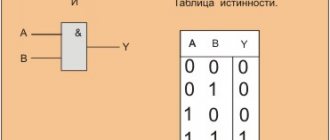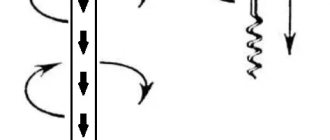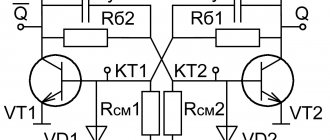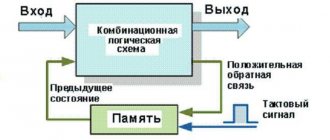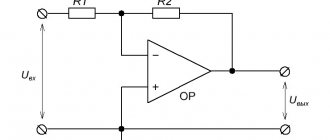What is a trigger in marketing
A trigger in marketing is a psychological technique of influencing a person’s subconscious that motivates them to perform a target action. Triggers are found in text, images, video, audio or graphic elements.
Selling triggers are stimuli that encourage an action to be performed by causing emotions in a person, such as greed, anger, joy, fear, surprise, desire, and so on. Remember how you spontaneously made a decision just because you felt a feeling of joy or fear. That is, they unknowingly responded to an offer or bought an “exclusive” item.
Psychological techniques influence the subconscious: they give rise to associations in the head, help to remember pleasant or negative moments, and encourage an uncontrollable desire to perform an action here and now.
Marketing actively uses triggers. They are used for the target audience segment or aimed at specific needs, fears and concerns of the audience.
How psychological triggers work
Most people are accustomed to react unconsciously with their emotions and actions to external stimuli. Of course, there are a lot of influences, and they vary in significance for a particular person. Separately, it is necessary to mention the reflexes of the body, which a person does not control at all. All people equally begin to blink and close their eyes in bright light or clear their throat if something gets into the “wrong throat.” These reflex actions are not among those that we will consider in our material.
We recommend
“Webinars in marketing: 8 advantages” Read more
Creating a trigger circuit can be compared to creating conditioned reflexes. You just need to take into account that a very important element of this mechanism will be the emotional component, and not just reinforcement through repeated repetition of “stimulation - response action”.
Triggers have the following features:
- Individuality.
Everyone has their own “triggers” hidden in their subconscious, which arose due to individual characteristics, lifestyle and as a result of upbringing in certain conditions and traditions. Therefore, people react completely differently to the same external signals.For example, one person is accustomed to smoking a cigarette after drinking his morning coffee, so even the smell of the drink immediately makes him want to smoke. And for another, the squeal of brake pads will immediately remind you of the disaster you experienced, and your body will shrink in horror.
- Emotions is an integral part of the trigger.
With the help of emotion, a trigger is integrated into a person’s behavior pattern. The “reaction + external stimulus” connection, supported by a strong emotion, is fixed very quickly and almost forever. It takes a lot of effort to change behavior that is imposed in this way. You understand that one more sweet pie is harmful to your health, but your hand reaches out on its own and it is very difficult to do anything about it.Emotions such as severe fear can literally paralyze a person, preventing him from acting. If a driver has been in a serious accident and has experienced fear for himself and his passengers, he may give up driving for a long time.
- Embedding in sensory memory.
Perhaps it would be too much if every external stimulus became a “trigger”. At the moment of impact, the sensory sphere must be involved. We can say that “good memory” in this case does not benefit a person, but harms it if the trigger is associated with some kind of negative emotion. - Responses
Such an attitude towards a trigger is often spontaneous, it is very difficult to control it, and it happens that the individual does not understand what is happening. In very severe cases, when the “hook” was associated with strong negativity, a person can act in a distorted state of consciousness, with absolutely no control over himself and his actions.Throughout life, our emotional baggage is replenished with a variety of experiences, and triggers are not always associated with negative feelings; they often have a pleasant or neutral connotation. For example, if during your lunch break you are used to drinking tea and cake, then without sweets you will no longer want tea.
For marketers, too, the connection between certain triggers and consumer actions has opened up a wide field of activity. The most frequently used marketing tricks do not carry a negative charge of emotions and do not become destructive to the human psyche.
Why use triggers in marketing
Sales triggers are used to achieve several goals:
- Receive a conversion - “buy”, “order”, “leave contact information”, “repost”, “comment”, “subscribe to the newsletter”, “download the application” and so on.
- Remove an objection or barrier from an audience member and relieve him of fear.
- Increase sales.
- Track user behavioral factors.
- Build long-term relationships with the client.
- Attract additional traffic based on customer recommendations.
Description and principle of operation
In a broad sense, a trigger (from the English trigger - a trigger that starts a mechanism) is any impulse or event that causes something. The term is used in electronics, psychology, medicine, programming and other fields of activity. In the creation of microcircuits and other devices, this is the name given to an element that is capable of taking one of two stable states (0 or 1) and maintaining them for a long time.
The position of the trigger depends on the signals it receives at the direct and inverse outputs. A distinctive feature of the device is that its transition from one position to another is determined not only by receiving external instructions coming from the selected control system, but also through feedback. That is, the current position of an element depends on the history of its operation.
only retain their memory . If you unplug it and then plug it back in, the device will go into a random state. Therefore, when designing a device, it is important to provide for the way in which it will initially be inserted into the correct position.
Any trigger is based on a circuit that consists of two logical elements of the AND-NOT or NOR-NOT type, which have positive feedback with each other. This type of connection allows the system to have only two possible stable states, from which one is selected. An important detail is that after the trigger has moved to a position, it can maintain it for as long as desired, until the next control signal is sent.
Another characteristic feature of the devices is the ability to instantly transition from one state to another after receiving the appropriate command. The delay is so small that it can be ignored when performing calculations.
The number of inputs may vary and depends on the required functions. If you send a signal to two of them simultaneously, it will take an arbitrary position after their arrival stops. According to their functions, inputs are divided into several types, which are included in two large groups: information and control. The first of them receive signals and store them in the form of information, while the second allow or prohibit its recording, and also perform a synchronization function. In the diagrams they have the following designations:
- S - sets the trigger to state “1” on the direct output;
- R is the opposite of S, resets the state back to “0”;
- C - synchronization input;
- D - receives information for subsequent recording on the trigger;
- T — counting input.
The combination of different types of inputs and outputs determines how the flip-flop operates. There are many designs of these devices used for different purposes.
Types of triggers in marketing
In this section, we will look at the types of triggers that are most often found in marketing. Triggers can be combined, but the main rule is not to use them too often. This will scare away the client: he will think that you are trying to sell him a product or impose it on him without thinking about the user’s problem.
Shortage
An artificially created product shortage is a trigger marketing technique that forces users to purchase a product faster. People are afraid of losing something, especially if the person likes the product or brand. For example, “only 3 suits left from a famous brand,” “have time to sign up for an English language group: 1 place available,” “limited number of products.”
Promotion of an online store selling goods for outdoor activities. The screenshot shows a sale on a limited number of FXR products with up to 53% off. This is a seasonal promotion - the winter period ends and companies sell off the remaining goods from their warehouse.
Example of shortage in ecommerce
Time limit
Another trigger in marketing is limited sales time. In this case, the trigger works for the installation: do it now, as tomorrow access will be closed. For example, “today only, 15% discount on all products,” a timer set on the website with the time until the end or start of the promotion, a unique offer that is valid only during the specified time frame—this won’t happen again.
An example of how a timer works on a website. The screenshot shows the main page of the Black Friday sale of the year: the timer for the start of sales, the date when the promotion ends and all items will be sold out, and information that the discounts will only last for three days. In this case, the fear trigger is still in effect - if you don’t buy a product on Black Friday, you won’t be able to save money.
An example of using a timer on a website
Fear as a trigger in marketing
Fear is the need for security: for yourself, for your life, for loved ones and relatives, for the safety of your home or personal data. On the other hand, this trigger can be thought of as a fear of loneliness or loss.
Example of a health insurance ad: “One virus could cost you your car or even your house. Basic health insurance protects you from high medical costs.” The banner was launched in the United States after news of the coronavirus. In America, medical care is expensive unless you purchase annual insurance. Advertising plays on fear for life and property. This may lead to worries about the family and the future of the children.
An example of using a fear trigger in an advertising banner
Be part of something bigger
This trigger is used in marketing to attract users to solve a problem. For example, protecting forests or oceans, saving animals, addressing issues of racism and attitudes towards minorities.
Example of a public service announcement: “Kenya Forest Service: Protect our forests. Protect our heritage." Eastern Africa is plagued by problems of illegal logging and charcoal trade. This, in turn, destroys the animals' habitat. Advertising evokes strong emotions of compassion and a desire to help. In this case, the visual effect works.
An example of drawing attention to a common problem is the destruction of rare species of animals and illegal logging
Exclusive
In another way, this trigger in marketing is called personality. The trigger plays on the desire to be different, not to be like everyone else, to stand out from the crowd and attract attention. Marketers emphasize that the product will make the buyer special.
For example, a luxury car - only 8 models were made, clothes from a famous fashion designer, individual production of accessories and jewelry. Either it is a subscription for VIP clients, an exclusive offer for regular users, private access to a community or group.
Newsletter for students and teachers from Adobe Creative Cloud. The letter offers an exclusive price for an annual Cloud subscription: access to more than 20 applications for work and creativity.
An example of using exclusivity as a trigger in marketing
Automation of email newsletters
Send chains of trigger messages: welcome, abandoned cart, reactivation, combining email, SMS and web push within one chain.
Set up trigger mailings
Reciprocity or gratitude
A trigger forces the user to be obligated. You offer your customer a gift, a free subscription, or a product sample. He, in turn, begins to feel the need to thank you: return to the site and purchase your product.
The example below shows a gift and bonus from a company that buys cars at auction. The client who has left his contact information receives a selection of cars that meet his needs.
An example of using a gratitude trigger in marketing
Greed
The most popular trigger in marketing, which is used for promotions, discounts and sales. The user gets the feeling that he is paying less for the product. For example, low prices during Black Friday, a sale of goods with a 50% discount, a “2 for the price of 1” promotion.
Below is an example from a clothing store that offers record low prices of up to 90%: an additional promotion “another -20%!” was added to products with a 70% discount. This technique increases the desire to buy as many goods as possible.
An example of how the greed trigger works
Intrigue
This trigger in marketing is based on curiosity. You start talking about your new and mysterious project that will change the world, but you break off the story with the phrases: “In the next post I will tell you what this project is,” “To be continued in the next issue.”
The example shows a post from the Yandex community. The title and text of the post motivate you to learn about new features of Yandex.Mail. To read the article, you need to follow the link.
An example of using an intrigue trigger in marketing
Social proof
A trigger in marketing that means herd mentality. When you post information that 1,000 people have purchased a product, and 900 of them recommend purchasing it, the user is likely to be interested in your offer. This is how social proof works.
For example, “300,000 people have already appreciated the quality of mattresses”, “50,000 customers use ours every day.
A popular review in the product card on the DNS website: a description of the advantages and disadvantages. On the left is the number of product discussions and reviews for the action camera. Thus, the user can evaluate all opinions and decide to purchase.
An example of how social proof works as a trigger in marketing
New
The trigger works on the desire to have something new or be the first to know the latest news. People experience a feeling of joy and satisfaction from new things. For example, buying the latest iPhone or video game, getting new information or services.
The example shows a new model of Samsung mobile phone. The review reflects the capabilities of a clamshell smartphone: the hinge mechanism allows you to use the Galaxy Z Fold2 in two formats - a tablet (7'6 inches) and a phone (6'2 inches).
New item trigger example
Guarantees
This trigger in marketing builds trust in a brand or product. Guarantees can include quality certificates, free service, and the ability to return money for goods.
Below is a page of an online clothing store. The main advantages are reflected in the site header. The screenshot shows information about returning goods within 90 days, not 14, as is established in the standard requirements.
Guarantee trigger example
Expertise
The trigger works to increase trust in a company or brand. Expertise is confirmed by certificates, diplomas, other awards, achievements and experience. For example, litigation – 10 years.
Marketers of the Bulker chain show on the main page of the site that the cafe has been operating on the market for 15 years.
Example of a trigger in marketing
Storytelling
A story about a company, brand, product or achievement. The essence of the trigger is to involve the user in the story and play on associations: childhood memories, the taste of food, a familiar melody.
The example below is an interview story that draws you into the world of gastronomic delights in Odessa. You immerse yourself in this world, compare something with your own memories and imagine yourself in Odessa. The article advertises a delicatessen market, but it is also perfect for sites that organize travel around the world.
An example of storytelling as a trigger in marketing
Simplicity
This technique helps create a simple path for the client: “buy in one click,” “fill out the form in 3 steps,” “use the application to quickly order a taxi.”
The example shows a site selling upholstered furniture. In product cards, in addition to the standard “Add to cart” call to action, there is also a “1-click order” button, highlighted in red to attract attention.
An example of using ease of ordering as a trigger in marketing
Pleasure
The trigger is triggered when you solve a user's problem. He doesn’t need to do anything for this, you take everything upon yourself. For example, the services of an event organizer, a washing vacuum cleaner to save time and effort, an application for saving passwords so as not to restore access every time.
The example shows a video advertisement for a robot vacuum cleaner that cleans itself. The fun is that you don't have to worry about cleaning all the time—iRobot does it all for you.
Example of a pleasure trigger
Stereotyping
In other words, prejudice. For example, that in China they produce cheap and bad things, while in Europe, on the contrary, they produce high-quality, although expensive.
Remember the packaging on products: GOST, environmentally friendly packaging, original recipes from an Italian chef - all this refers to stereotypes.
uses a stereotype trigger in its advertising: the company produces the product on German equipment using German technologies. The buyer begins to think about the reliability of such windows and their durability.
An example of a stereotyping trigger in banner advertising
Controversy trigger
In marketing, the contradiction trigger works like this: advertising tries to convince the user not to take some action, and this makes him angry and wants to do it his own way.
For example, “close the page immediately”, “do not order”, “do not open this letter if...”.
Such a trigger in marketing is used on a website about business in one of the articles. In the title, the author warns why you should not read the text: “If you love your job, do not read this article.” The introduction continues this same technique: the author says that he will reveal important truths that readers probably do not want to hear, so they should stop reading immediately.
Example of a contradiction trigger
How to properly use emotional triggers to increase sales: 10 examples
When we talked about triggers in psychology, we mentioned that they have such a big impact on us precisely because they involve emotions and strongly connect them to our sense of self.
In marketing, the use of triggers helps to achieve the same result - to evoke emotions and motivate to make a purchase.
Here are examples of basic techniques for using triggers.
Fear
Fear is an emotion that can be used in a wide variety of marketing messages. Insurance companies often appeal to the emotions of fear with messages like, “Don't get caught in a price that's too low.”
Guilt
Consumers are easily influenced by messages that evoke guilt. Nonprofits effectively use guilt triggers in their messages, such as, “Don't let them suffer anymore.”
Confidence
is one of the hottest trends in marketing, and every company is trying to incorporate trust into their marketing messages. Lenders are leading the way with messaging like “no hidden fees.”
Value
is another necessary trend in marketing, and many promotions appeal directly to the emotional stimulus.
For example, promotional messages that say, “If you find a better price for the same product, we'll refund the difference.” Such messages effectively evoke feelings associated with value.
Affiliation
Few people really want to be alone. Human nature dictates that most people want to belong to a group, it's been in our genes since ancient humans began to form tribes.
Customers often buy products in an attempt to feel like they are part of a certain group. Many companies effectively appeal to consumers' desires to belong by using phrases like "You're part of the family."
A striking example is advertising of Apple products. Users want to belong to the elite caste, even despite the fact that Russian frosts paralyze the known technology.
Competition
Many consumers suffer from a competitive desire to feel equal or better than their peers. A phrase like “Wipe their nose” or “Make them jealous” is an excellent example of advertising that evokes a feeling of competition.
Instant gratification
We live in a world where people expect instant results in every aspect of their lives. Messages that satisfy a sense of urgency are well received by customers.
Use words like now, today, in one hour or less, within 24 hours, etc. to appeal to the emotional trigger of instant gratification. A familiar example of advertising with a trigger is that we will deliver pizza in 60 minutes or return your money. I would like to respond to such a proposal.
Leadership
Many consumers want to be the first to try new products, and this audience actively responds to marketing messages that appeal to their sense of leadership. Phrases such as “Be the first in your city” effectively appeal to the emotional trigger of leadership.
Setting a trend
Many consumers want to feel cool or fashionable, so appealing to these emotions in copywriting is fairly standard.
Variations of "all the cool kids are doing it" are common and can be used to promote a wide range of products and services to an even wider audience. The famous US Gatorade advertisement featuring Michael Jordan and the slogan “Be like Michael” is a perfect example.
What else to read: Direct sales, what is it, Push notifications, what is it, Targeting in simple words.
Time
In the 21st century, people are busier than ever. Thus, they want more free time to do personal things and spend time with family and friends.
Marketing advertisements that appeal to the desire to have more free time are extremely effective. For example, “Cut the time it takes to do something by half.”
There are many emotional triggers you can use to evoke feelings in your target audience and encourage them to take action through your marketing messages.
People see a lot of marketing messages every day, so you need to give them a reason to choose yours, make them feel something. Feelings are powerful, and trigger copywriting offers a unique opportunity to harness that power and use it to benefit your business.
Now you know what a trigger is. In psychology, this is the hook that triggers a memory. In marketing, there is the same hook that brings a potential client closer to a purchase. Use the examples given - they will help you effectively promote your product or service.
Sincerely, Dmitry Smirnov especially for the project proudalenku.ru
Clickbait
CTR formula
Examples of USP
Targetologist from scratch
Contextual advertising from scratch
Triggers in marketing: examples
The myToys online store in its welcome email newsletter thanks you for subscribing and gives you 500 rubles for your next purchase. This is a gratitude trigger.
After the bonus there is a short story about the brand: there are more than 25,000 products on the site, promotions are held every day. Added a trust trigger.
In conclusion, information is provided on how many customers are ready to buy again - 91% according to Yandex.Market. This uses a social proof trigger.
An example of how to use triggers in email campaigns
An example of triggers in marketing for a developer’s website. The review presents a complex of luxury apartments in Moscow.
In the first block, the development company speculates on emotions: for those in love with Moscow. They also use a gratitude trigger and a time limit in the form of a 14% discount until the end of August.
In the following blocks, an exclusivity trigger was added: the status of the complex, roof gardens.
In the block about parking and urban style, a pleasure trigger was used: “a courtyard without cars” - each resident has his own parking space, the complex is located in the central part of Moscow, with business centers, museums, parks and theaters nearby. A person does not need to worry about where to park the car and how to spend the weekend.
Navigation on the site is simple: for each block there is a button, by clicking on which you can find out details of all the advantages of the residential complex.
An example of how to use triggers in marketing on a developer’s website
Universal trigger (JK trigger)
Such a trigger has information inputs J and K, which in their influence are similar to the inputs S and R of a clocked RS trigger:
- when J=1, K=0, the clock pulse trigger is set to state Q=1;
- when J= 0, K=1 – switches to state Q=0;
- when J=K=0 – stores previously received information.
But unlike a synchronous RS flip-flop, the simultaneous presence of logical 1s at the information inputs is not a prohibited combination for a JK flip-flop and leads the flip-flop to the opposite state.
JK flip-flop transition table
| K | J | C | Q(t) | Q(t+1) |
| 1 | ||||
| 1 | 1 | 1 | ||
| 1 | 1 | 1 | ||
| 1 | 1 | 1 | 1 | |
| 1 | 1 | |||
| 1 | 1 | 1 | ||
| 1 | 1 | 1 | 1 | |
| 1 | 1 | 1 | 1 |
Digital electronics – YB-triggers with dominant Y-input
The presence of forbidden combinations for clocked &Y flip-flops gave rise to the idea of building a trigger that forcibly sets Qx to 0 at S = 1 and R = 1 when a clock pulse is applied. This becomes possible thanks to a special connection of the inputs. In Fig. Figure 7.35 shows such a connection of inputs. When S = 1 and R = 1, the 1-signal cannot affect the flip-flop, since the output of the element is NOT 0. The AND-element is locked. 1-signal on R allows reset. The setting mode with S = 1 and R = 0 remains possible, since now the output of the NOT element is 1 and the AND element has a 1 at the output.
Interesting article: What is a solid state relay?
Such a trigger is called an .RS'-trigger with a dominant /?-input, or a ^trigger. The rule of its operation follows from the symbol in Fig. 7.36 (see also section 7.1). It says: if both inputs of the trigger S, R and input T have level 1, then with a synchronization signal 1 Q{ is set to 0, and Q2 is set to 1. The truth table of a clocked LU flip-flop with a dominant R-input is shown in Fig. 7.37. Of course, there is also a clocked RS flip-flop with a dominant ^-input (see reference test).
It will be interesting➡ What is step voltage and why is it dangerous?
Trigger marketing - tips
- Use triggers on your website, advertising, social networks, videos, commercial offers, and mailings. The main thing is not to overdo it with them. Try to have up to three triggers per post: in the title, description and conclusion.
- Study your audience, find out their weaknesses and strengths, fears and desires. This will make it easier for you to understand which trigger to apply and where it is best to do it.
- If you promise your audience a gift, a discount or free shipping, do not deceive, make sure that the person trusts you and will definitely come back.
- Don't be intrusive. Play with triggers carefully: for one aggressive, two soft ones. Otherwise, the client will be in constant stress and leave you. For example, constant reminders about loneliness in mailing lists or on dating sites make a person depressed.
- Use numbers and data about your success and experience. This will show your expertise - and the user will be able to trust you more easily.
- Tell the customer how he will feel after purchasing your product or using your service.
- Show how the product simplifies his life, relieves stress and unnecessary worries.
How to Get Rid of Triggers: Controlling Your Triggers
If the emotions and reactions evoked by the stimuli are causing discomfort, then action should be taken. For self-control of stimuli, you must follow some recommendations:
- be attentive to your feelings, thoughts and emotions - this will help you recognize the problem;
- analyze your personal experience - this way you can understand the root cause of the trigger;
- show willpower and common sense - by being aware of the real state of affairs and making efforts, it is possible to cope with the effect of almost any trigger.
It is possible to independently combat the consequences of contact with a stimulus only in the absence of pathological reactions. If triggers cause clouding of consciousness, you need to seek help from specialists.
Undesirable consequences of triggers
Most of the triggers we encounter are neutral and have little or no impact on our quality of life. But some may cause unwanted effects, such as:
- Loss of control over emotions. Under the influence of a trigger, you can do a bad thing or offend a person.
- Susceptibility to other people's influence. Even an adult, in certain circumstances, can perceive another person as a mentor and be influenced by him.
- Spontaneous purchases. Marketers often use promotions, artificial hype, fake discounts, and other triggers to get people to make unnecessary purchases.
- Deterioration of health. Strong experiences can have a noticeable impact on well-being, reduce immunity and even lead to the development of chronic diseases.
A trigger can become a dangerous psychological trap. Sometimes a person falls into it on his own, but it also happens that all kinds of scammers and schemers try to take advantage of these vulnerabilities in our psyche. Therefore, it is important to promptly recognize the impact of the trigger and get rid of it in all available ways.

